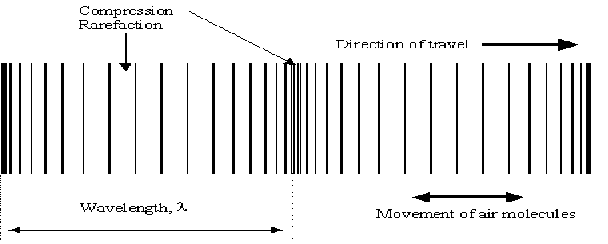All waves have in common that they transfer energy from place to place. The are many aorts of waves, but they can be separated into two types: longitudinal and transverse.
Transverse waves – the wave vibrates up and down or side to side as the wave moves forward. Technically, the vibrations are perpendicular to direction of travel of motion. Examples include water waves, vibrations on a guitar string, all electromagnetic waves, and S – waves, produced during earthquakes.

Longitudinal Waves - the wave vibrates forwards and backwards as the wave moves forward. The vibrations themselves are transmitted – the air moleculeswhich transmit the vibrations vibrating about a mean position. Examples include sound waves, pressure waves, P waves produced during earthquakes.

All waves may be diffracted, reflected, refracted and undergo dispersion, but longitudinal waves cannot be polarised.
